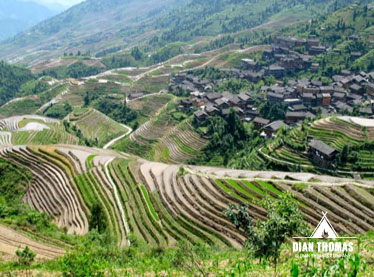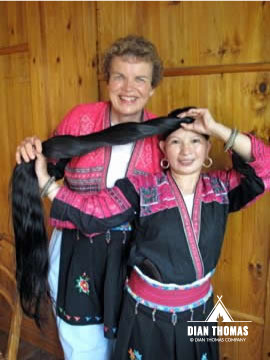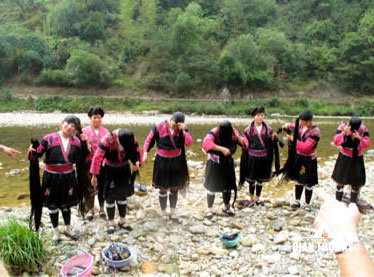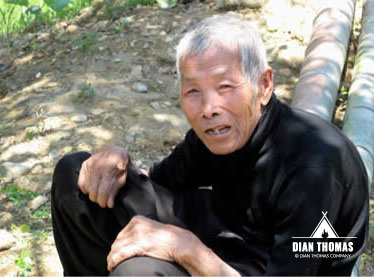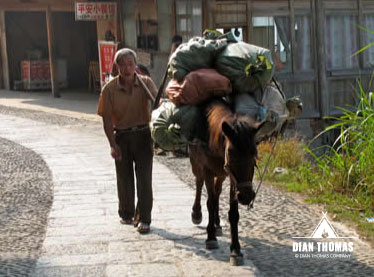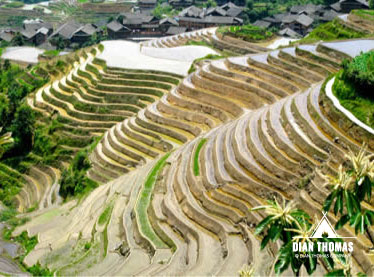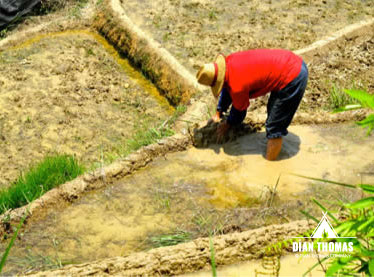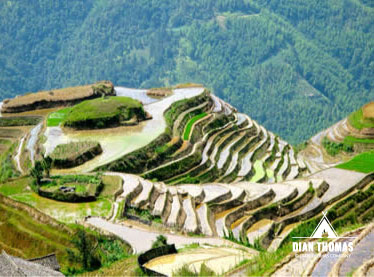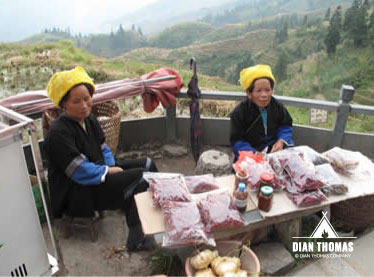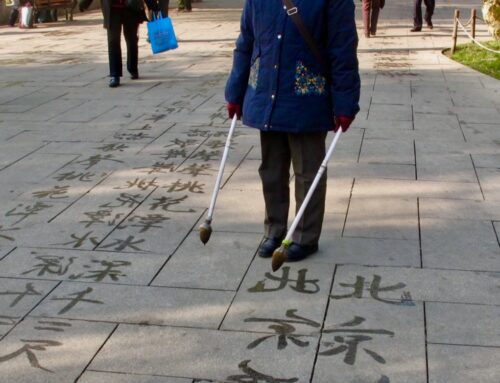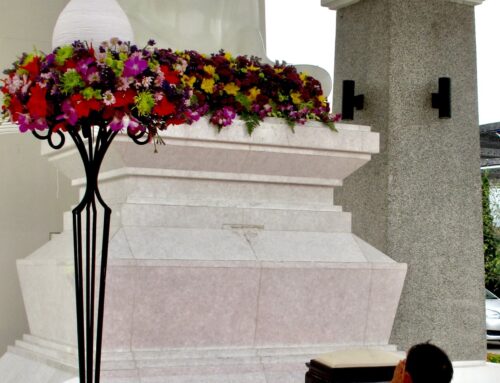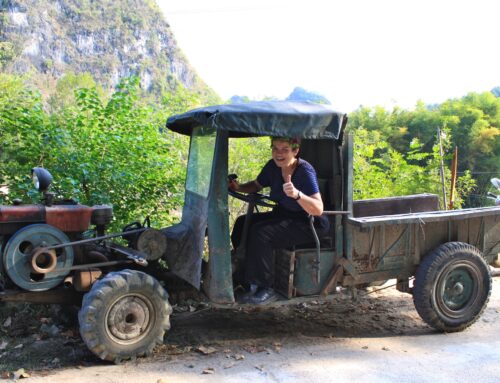As I travel the world, I am always amazed to see concepts that people think of and then go on to create. When traveling to the Longi Rice Terrace, one is brought to wonder and amazement to see what has been created on the side of the mountains. The Longi rice terraces are the most amazing terraces found in China. The journey to the terraces takes you winding down a beautiful mountain valley, along the side of a clear mountain river with Chinese men walking up and down the river to catch the local fish.
Up and down the river live one of the 56 minority peoples of China. They are the Yao people. They dress in colorful bright costume and only cut their hair once when they are 18. When their hair is taken down it goes all the way to their ankles.
One of the highlights of the journey is to stop and see a performance of several of them as they take their long hair down. For everyday wear, the hair is wrapped around their heads. When their hair is taken down, they have two long strands. One strand is their saved hair from when it was cut at age18, and the other is the hair that now has grown and not been cut since 18. When it is wrapped around their head for everyday wear, it is placed with a bun in the middle of the stack of hair if they are married.
As we journeyed down the river, we found a little Chinese man sitting relaxing on the side of the road. He was pleased when we stopped and greeted him in Chinese, as we had just learned how to say “hello”, which sounds like “knee how”.
We were stopped at a big parking lot and loading into a smaller bus that could make it up the hair pin turns on the side of the mountain. The road only went half way up the mountain, and then it was up to us to walk or be carried in a chair like the emperor. The journey is about one mile up to the small town of Longi. There are no roads into the village. Everything is taken on foot or on the backs of the many donkeys that make their way up and down the mountain all day long.
The town of Longi is nestled in the middle of the rice terraces. It is the place that many of the workers live with their families. They are many hotels in the town to house the hundreds of people who journey up the mountain to see this feat of creativity, farming and engineering. The terraces wind their way from the riverside up to the top of the mountain. Construction of the Longji terraces began in the Yuan Dynasty (1271-1368), and continued until the early Qing Dynasty (1644-1911) when the terraces were finished.
Springs, and also water that is pumped to the top of the mountain, wind down in little ditches or small bamboo pipes, dumping water in every terrace as it goes down the mountain. In the spring one will often see the workers repairing the walls of the terraces so that they can hold the water needed to plant the rice in June.
Paths snake around the mountain taking the workers to every part of the terraces to work. Visitors also enjoy the small path to get a closer look at the hundreds of terraces
As you walk along the mountain, many of the minority people come out to sell their wares. The people living in the mountain village are the Zhuang minority people. They do not grow their hair long, but instead wear a pastel towel-like cap.
The terraces have several seasons and with each season, they take on new appearance. In the spring the water fills the terraces for a mirror like look. In June the small rice plants are put into the water to grow. As they grow, one can see the beautiful lush green. By harvest, the terraces have turned a beautiful golden yellow. After harvest, the stock are gathered and one can see small fires up and down the mountain, filling the air with smoke.
These rice terraces tell a story of a hard working people that still toil in the field to grow the crops that their ancestors started so long ago.
